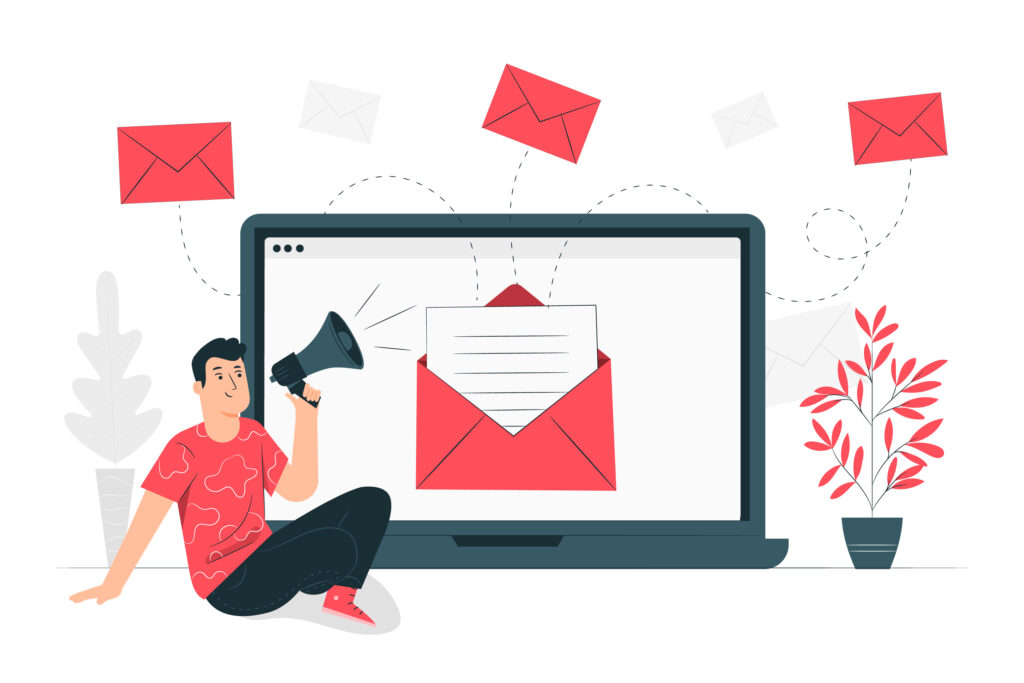More than ever, businesses today are getting their messages in front of prospects and customers who spend considerable time using the internet.
The logic is simple: people are moving from analog to digital. Unlike years ago when they read newspapers, today, news is read on the go using smartphones. Likewise, in the shopping experience, you do not necessarily have to walk into a brick-and-mortar store to buy anything; with a few taps on your phone, you can get it delivered to your doorstep.
While businesses continue leveraging digital marketing strategies to improve sales and their digital reputation, email marketing, a form of digital marketing, has continually outperformed all other alternatives.
Email marketing is almost as old as the internet itself. Most internet users have email, as it is required for many online activities, including communication and account sign-ups.
The first attempt at email marketing was in 1978, and even though it received several complaints, it generated about $14 million in sales.
A well-planned email marketing campaign can generate $36 for every $1 spent.
What is email marketing?
Email marketing is a form of digital marketing strategy that involves sending commercial messages, promotional content, or newsletters to a target audience to achieve various marketing goals.
As a type of direct marketing, it enables companies to engage a targeted audience with content that is both personalized and pertinent.
Email marketing is cost-effective and highly trackable. Various tools are available for companies to monitor important indicators like open rates, click-through rates, and conversion rates.
How to plan an effective email marketing campaign
Even though email marketing is as simple as sending mail to a colleague or friend, it requires strategic planning to be effective. Below are a few vital steps to get you started:
Identify your audience
Like any other marketing strategy, you must understand your target audience to develop a successful email marketing campaign.
Research their persona, such as why they might care about your product and the time of the day they are most likely to check their inbox.
Define your goals
Once you understand who your targeted audiences are, set goals for the campaign. Decide if you want them to take action or only want to inform them about a product or an update.
This will help guide the overall campaign strategy and can also be used to track the campaign’s effectiveness.
Another trick you can use here is to research your industry for similar campaigns and results. This can be used as a benchmark.
Build email list
Do not buy an email list. It is best to gather and compile from consenting users. The quality of your email address plays a vital role in the campaign result.
Only send your email campaign to users who have permitted you to send them relevant content.
You can significantly grow your email list by offering lead magnets. This can be vouchers, eBooks, infographics, whitepapers, free courses, or anything that will make your targeted audiences’ lives easier. By offering this, they will be more inclined to give you their email in exchange.
Increasing your list size can take time; however, make it worthwhile for those already on the list. You do not want to start losing more subscribers than you gain.
Choose an email service provider
An email service provider (ESP) offers email marketers the necessary tools to create, send, and manage campaigns. When choosing an ESP, consider budget-friendly tools that provide reliable security.
Use an email client if you intend to get optimal results from the campaign. It allows you to manage different email addresses in one place easily. You can easily move around with it installed on your smartphone or any other mobile gadget and reply to customers’ emails faster.
Some email client service providers also offer ESP. Using them can help reduce your overall expenses.
Create an email campaign type
There are different types of email campaigns for various purposes. Imagine yourself as the receiver and deduce the best sequence in which you would like to receive emails from a company like yours.
Some of the common email campaign types are:
- Welcome email
- Promotional campaign
- Seasonal campaign
- Post-purchase
- Newsletter
- Abandoned cart
- Re-engagement campaign
Measure the campaign’s performance to decide which is best for your audience. Also, allow them to select or opt out of the different campaigns.
When to use email marketing
Businesses can use email marketing to:
- Promote products and services: This is the most common use of email marketing. Businesses can use emails to announce new products, offer discounts and promotions, and generate leads.
- Build customer relationships: This strategy maintains communication with clients, helping to cultivate lasting relationships. Businesses can send regular newsletters, offer exclusive content, and provide helpful information to their subscribers.
- Nurture leads: Email marketing serves as an effective tool for fostering potential leads and turning them into loyal customers. Businesses can send targeted email campaigns to educate leads about their products and services, offer them incentives to buy, and drive them through the sales funnel.
- Increase brand awareness: Businesses can leverage it to build brand awareness and loyalty. It can be used to share brand stories, showcase company values, and connect with the targeted audience on a personal level.
Benefits of email marketing
- Scalable: There are over 4 billion email users worldwide, and there is a high chance most of your prospects and customers have an email address. It is easy to adjust your email marketing strategy based on your needs and the number of targeted audiences.
- Cost-effective: The Return on Investment (ROI) for email marketing is estimated to be $36-$40 for every $1 spent. Over 33 percent of businesses as of 2023 are increasing their investment in email marketing.
- Measurable: Email marketing enables the tracking of essential metrics, including open rates, click-through rates, and conversion rates. Utilizing this data assists in evaluating your campaign’s effectiveness and guides continuous optimization over time.
- Personalizable: Email marketing allows you to personalize your messages to each prospect and customer. This makes your emails more relevant and engaging, which can lead to better results.
- Budget-friendly and easy to implement: Launching an email marketing campaign with $0 is possible. You only need the email addresses of your clients or prospects to get started.






